Posted by
Liraz Postan
If you want to reach a wider audience, drive more traffic to your site, and increase conversions then you definitely want to rank higher on the Google SERP! Google, after all, is the world’s most successful search engine – you would be losing a deluge of opportunities if you do not take advantage of that! Not everyone understands the value behind this narrative and many lack the know-how to effectively undertake some good ol’ keyword research.
For you to rank higher and bring in more traffic from Google, the very first thing you need to do is keyword research. With it, you will have concrete knowledge of what exactly your target audience is looking for. What can be more powerful than that?
Lucky for you, the ‘keyword research road’ is not overly complicated (at least it doesn’t have to be). While finding the right keywords can feel like trudging through a labyrinth, it doesn’t have to. There is a way to easily find the perfect keywords for your content. That is because Google itself offers a free keyword research tool… Keyword Planner.
Google Keyword Planner in a Nutshell
Before we dig deeper into how to use Google’s Keyword Planner, let’s first understand what the tool is exactly. Because, while we might use the tool for organic SEO purposes, that’s not why Google built it!
Keyword Planner is a part of the titular advertising platform known as Google Ads. It gives you the ability to not only research but also to analyze a variety of keywords lists. The idea is that you can take advantage of these keyword lists when running your pay-per-click campaigns.
In other words, Keyword Planner was specifically designed to be a paid search tool. However, its data has proven to be extremely useful for organic SEO (Search Engine Optimization) purposes. Due to the gap in the reason behind the tool’s creation and the manner in which SEOs use it, getting started with the tool and implementing it correctly requires a bit of know-how.
A Tale of Keyword Research Caution: On the Limitations of Keyword Planner

The devil is in the details and with Keyword Planner there are plenty of details. Before you get discouraged by all the technicalities, don’t be. Why? For starters, fundamentally, Keyword Planner is super easy to use.
BUT, and this is a huge BUT, not all marketers prefer using Google Keyword Planner as their go-to tool for planning their keyword strategy. You need to “learn” the tool, but if you’re looking for accurate search volume data and do not have an active Google Ads campaign running, this data will remain locked for you. You’ll only see the search volume ranges, which for self-evident reasons may not be as effective as the real deal.
My point is, you have to keep things in perspective when using Keyword Planner and you have to understand where the tool can and can’t help you.
As I alluded to earlier, Google Keyword Planner is a very powerful and effective tool, but do not forget the fact that it is an integral element in the advertising platform and is heavily-oriented towards paid search.
In other words, Keyword Planner should only be one of your go-to tools when it comes to keyword research. As much as possible, explore other tools out there so you can better maximize your efforts and investment.
These tools will allow you to explore keywords a bit more “creatively.” For example, I **** to explore tons of questions, long-tails, and a lot more outside the scope of Google Keyword Planner. This is a lot easier with some of the other tools on the market. There’s also overall efficiency to consider which is I why personally use other keyword research tools so that I can manage all of my SEO efforts in one dashboard.
Of course, Rank Ranger offers an entire suite of keyword research tools that help you do exactly this!
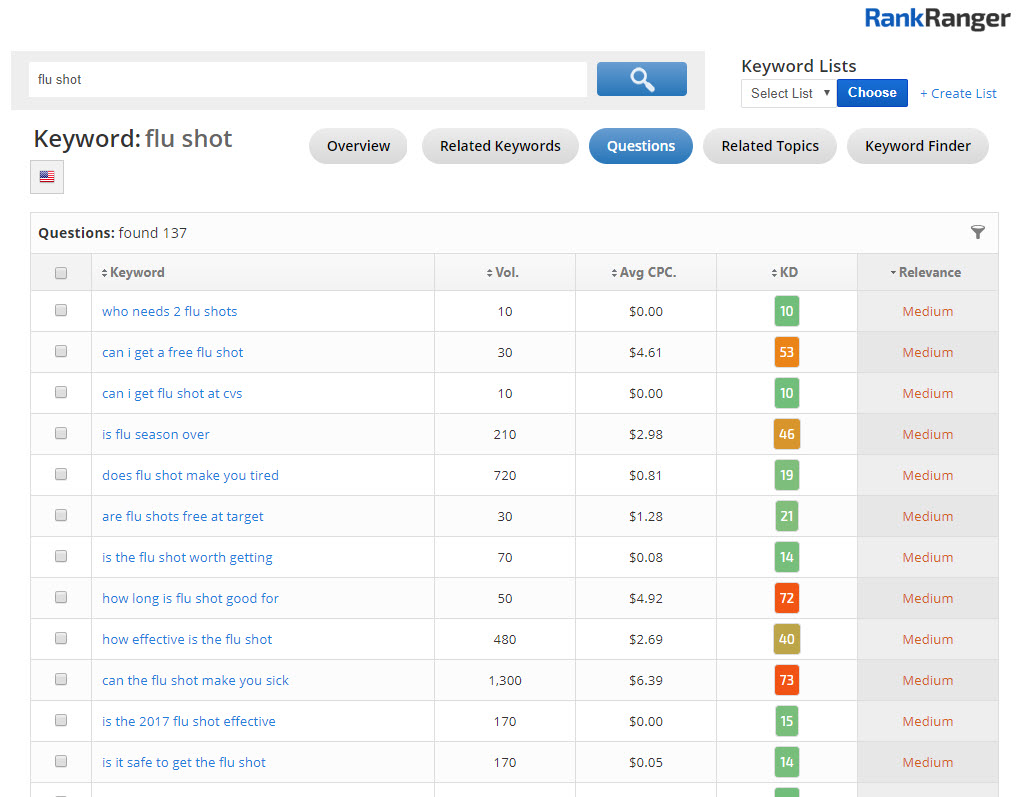
Rank Ranger’s keyword research suite showing questions relevant to a keyword term
How to Use Google Keyword Planner – Getting Started!

Here we go!
Using Google Keyword Planner is 100% free – it does not require you to spend a penny. The same thing can be said when it comes to gaining access to Google Ads… which is what you’ll need to do to get started.
So how do you set up a Google Ads account?
How to Set Up a Google Ads Account & Get Going With Keyword Planner
One important thing before we get going here…. When setting up your Google Ads account you should keep in mind that Google can be so “energetic” it might look like you have no way of accessing the tool without opening your wallet. Meaning, you might feel like you have to spend some cash in order to gain access.
Know that you can always access the tool without the need to run a Google Ad and subsequently spend money. Of course, there are some obstacles you need to conquer and defeat in order to do this.
That said, head over to the Google Ads homepage and set up an account. The first you will see is a screen that asks you to outline your main advertising goal. Don’t! You do not need to indicate your ‘main advertising goal’ to get started with Keyword Planner.
Instead, look under the box and click on Experienced with Google Ads?
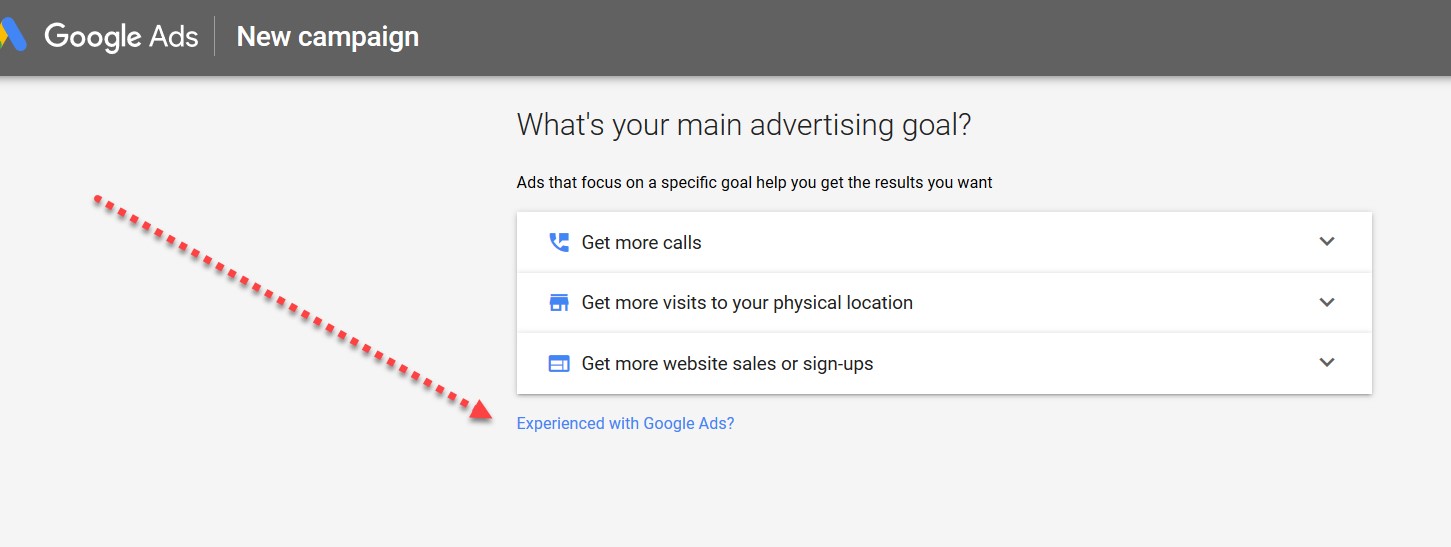
This will bring you to a screen that asks you to select a goal (Google is a bit persistent). Again, don’t select anything. Rather, look under the box and click on “Create an account without a campaign”:
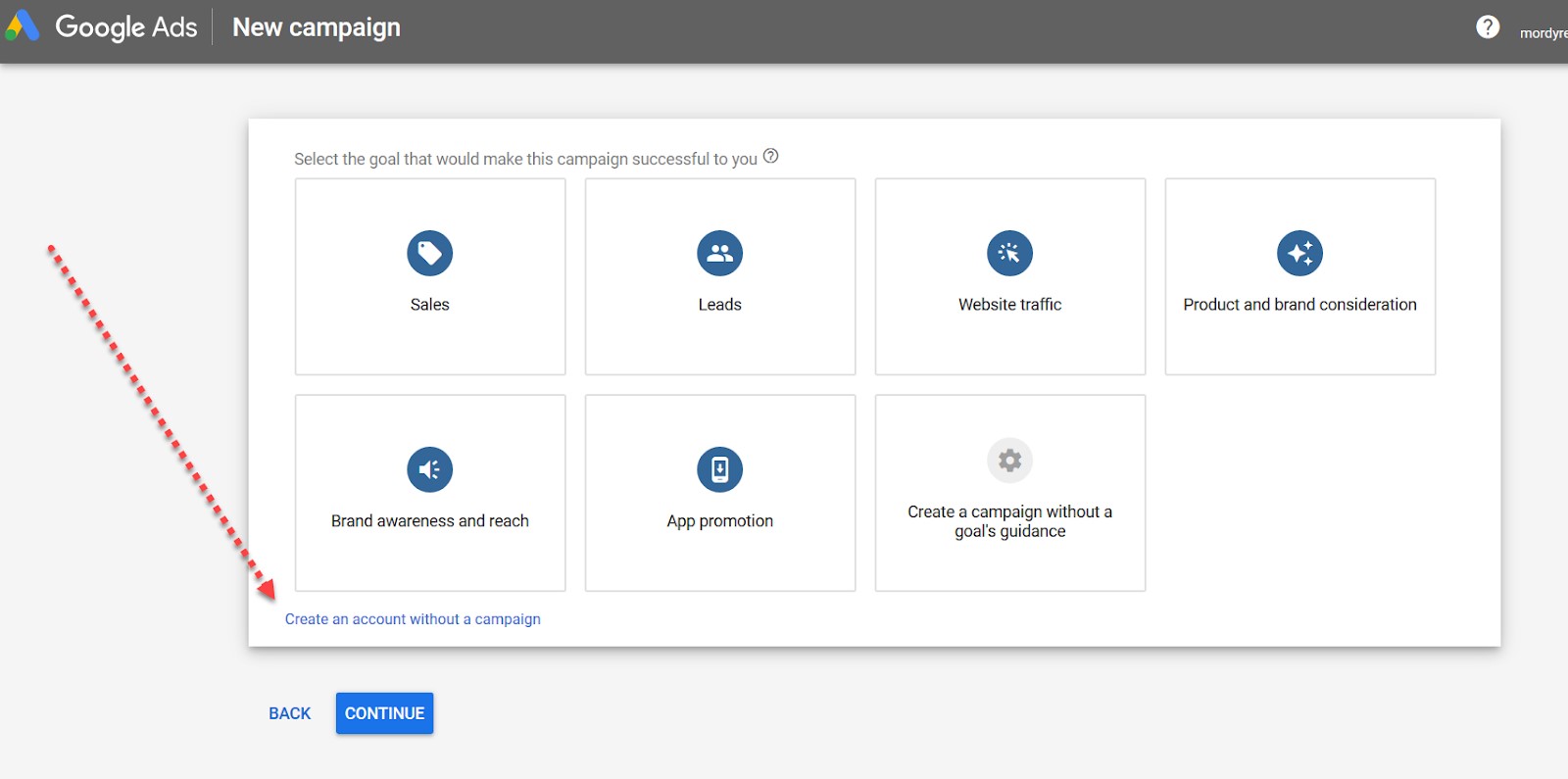
Now you’re faced with no other choice but to enter some information. Don’t freak out, you will not be charged!
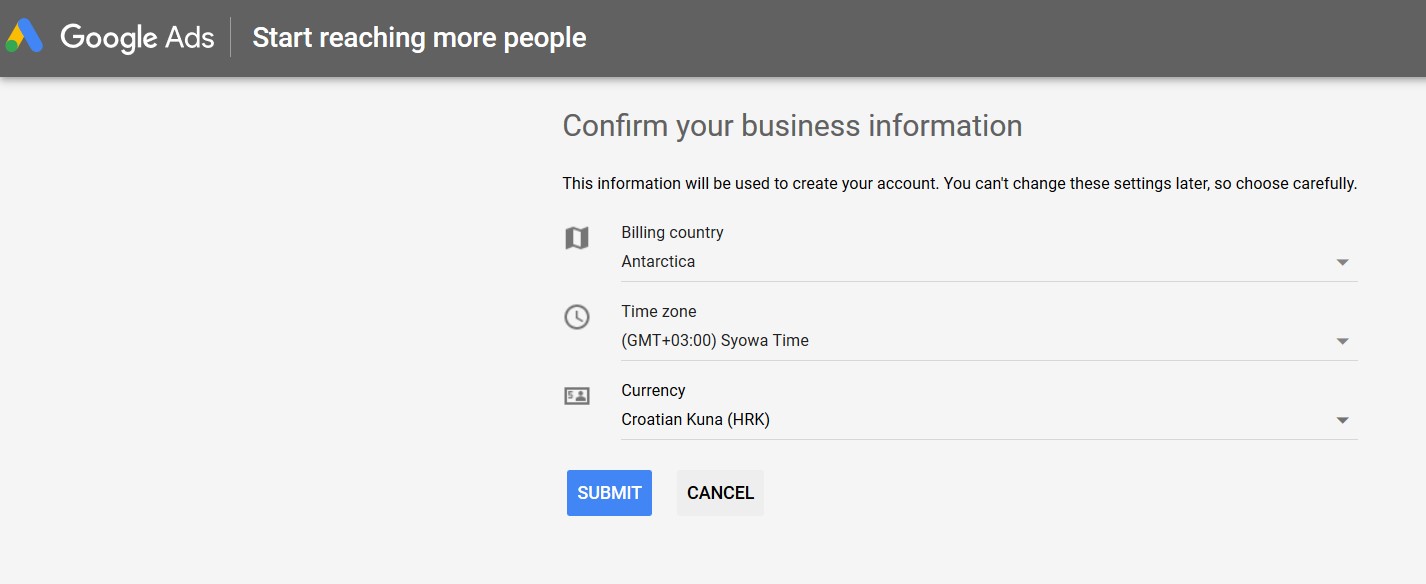
Submit your information and hooray… you’re good to go:
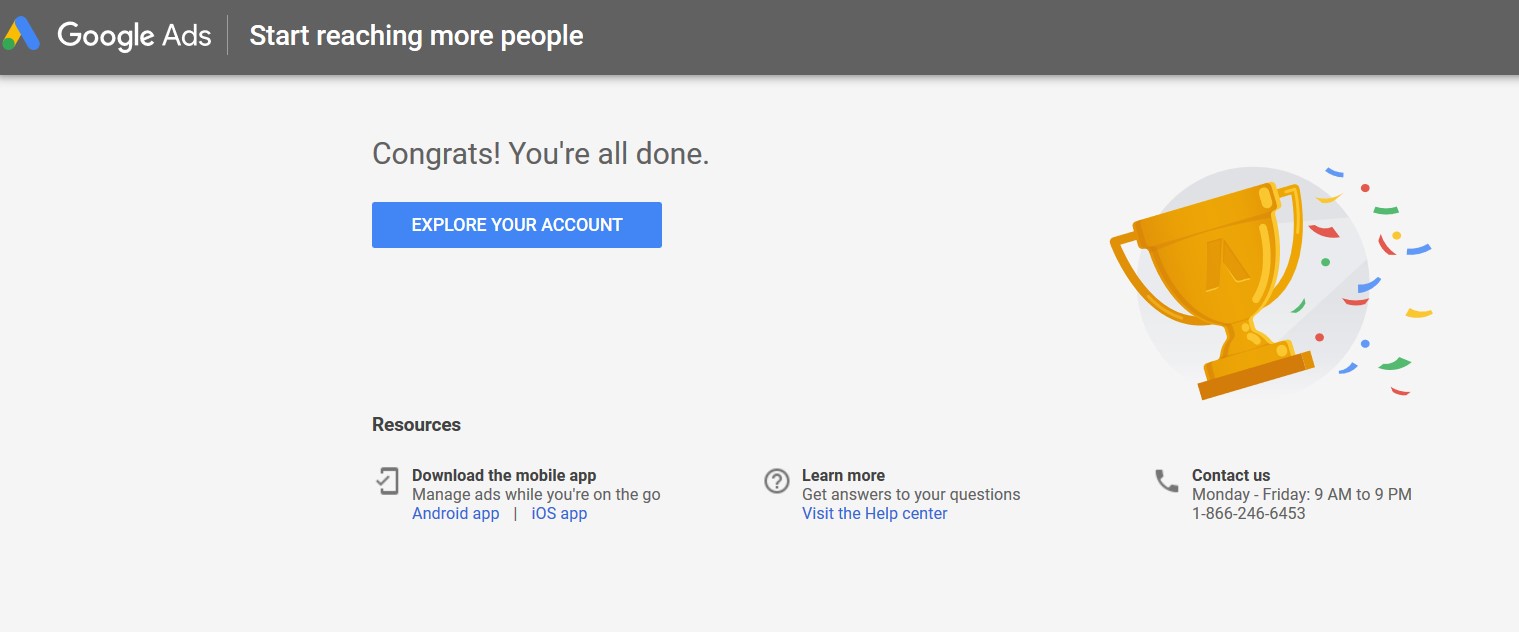
Click that Explore Your Account button… it will bring you to a campaign dashboard.
Now, as odd as this may sound, you want to tell Google you are an ad expert. Click on the Settings icon and select Switch to Expert Mode:
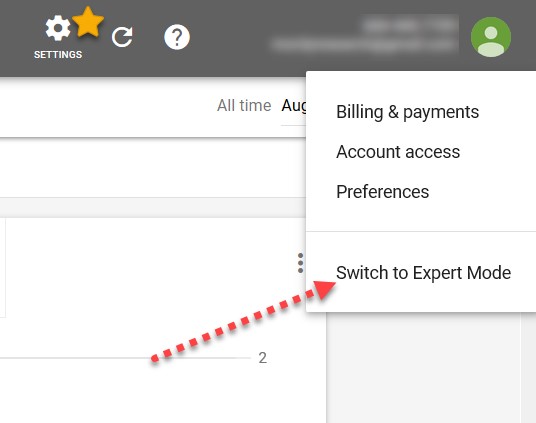
You’ll now be navigated to a new dashboard with all sorts of advanced doohickies. Hit the Tools & Settings option at the top right and select Keyword Planner from within the Planning menu!
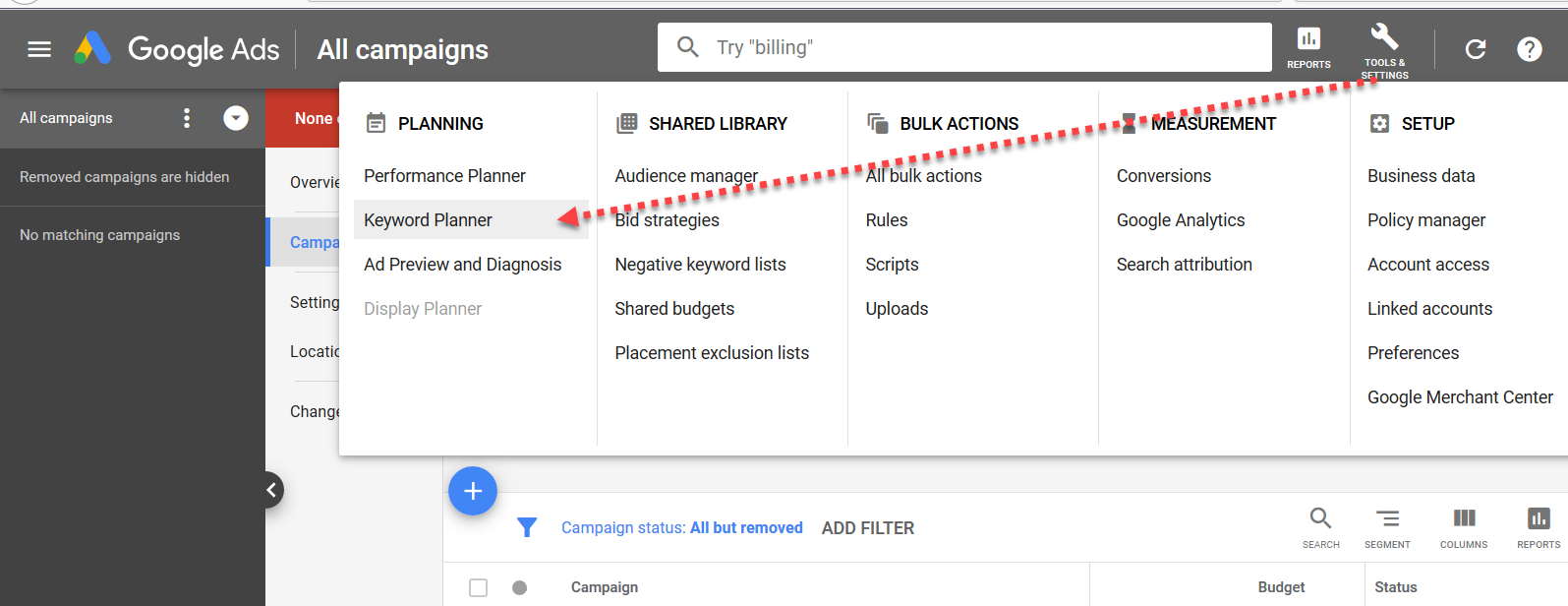
Congratulations! You just gained access to your free Google Keyword Planner!
Selecting the Right Keyword Planner Option
Great, you’ve set up your account and have reached the gates of Keyword Planner! Now let’s have a look at how you can actually use the tool.
Once you’ve reached the tool, you are going to see the following two options:

Confused? Don’t be. Here’s what these two choices mean:
- Discover New Keywords: This is where you will be able to obtain keyword ideas that can help you reach people that are interested in the products and/or services you provide. This is a great option if you’re looking to discover more ideas, find inspiration for an obscure topic you’re writing about, or explore any niche areas.

- Get search volume and forecasts: This is where you can have a look at the search volume and other significant (as well as historical) metrics that specifically apply to your keywords. Even more so, you will gain access to forecasts that could help you predict how your keywords might perform in the near future. This information is great for planning your content strategy or content calendar. For example, if you see a nice search volume uptick around the seasonal holidays for a keyword, that may be the perfect time to release certain types of content.

You should know that there is a significant difference between selecting Discover new keywords versus Get search volume and forecasts. With the former, you’ll see an amazing list of related searches and keywords while with the latter you’ll see the exact keywords you’ve chosen. Both tools/options come with the ability to add your keywords to a new Google Ad campaign.
Just remember that these two options represent two separate standalone tools!
Google Keyword Planner Tips and Hacks
Now that you know how Google Keyword Planner works, as well as how to set it up and use it, you need to learn a couple of keyword tips and hacks!
Explore Any Keyword’s Exact Average Monthly Search
Believe it or not, you can find the exact monthly search volume for a specific keyword. You can get these stats, but you have to run a Google Ads campaign. This will cost you money. Many marketers prefer to run low-volume CPC ads in order to ‘pay’ for this data.
That said, even without running actual ads, Google will still offer you search volume ranges.
The search volume ranges can indeed give you a sense of how competitive a keyword is and how to tackle it via content.
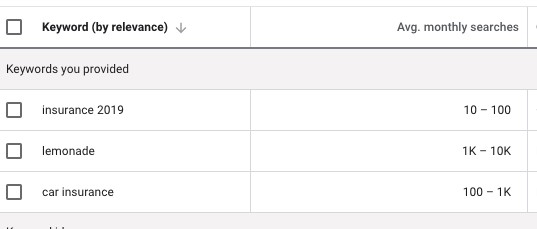
Search Multiple Keywords
One of the main reasons to use Keyword Planner is to find scores of related keywords. Fortunately, doing so is pretty easy. Have a look at the image below. Here, Google asks you to enter products or services related to your site. Once you do, Google will offer you a plethora of results related to the various terms you have entered. The truth is, you may want to enter terms that are centered around one topic, though you certainly do not have to do so!

**** to a Competitive Website
Keep in mind that Google’s Keyword Planner is a bit limited when it comes to searching for a specific keyword. This is nothing new as other paid tools present the same dilemma. That limitation aside, Keyword Planner does give you the ability to check keywords for a competitor’s website.
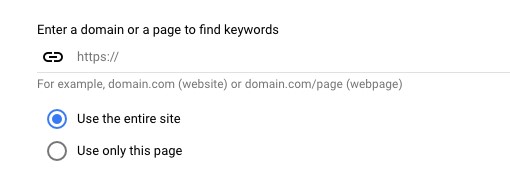
Just go back to the search home page. Here, you have the option to provide a competitive website. Google will run the page and pull back keyword ideas based on the page’s content. You just need to be careful which sites you choose to run. Let’s say for instance that you are interested in health content and looking for keywords from within this niche. In that case, go for websites that are known for this type of content and that are authoritative so that the keywords you get back from Keyword Planner won’t put you on the wrong path.
You’re ready to research like a pro
Google’s Keyword Planner is foundational and one of the basic tools any SEO should be familiar with. Note that this tool is constantly changing and evolving, so be sure to check in on it every once and a while so as to stay current and updated.
I personally recommend signing up to Google’s newsletter to make sure you’re not missing any feature upgrade to this tool or to any of Google’s tools: Google Analytics, Google Keyword Planner, Google Optimizer, and more.
Keyword research is the basis of any solid SEO. Make sure your research is focused and on target so that your content planning will be successful!

